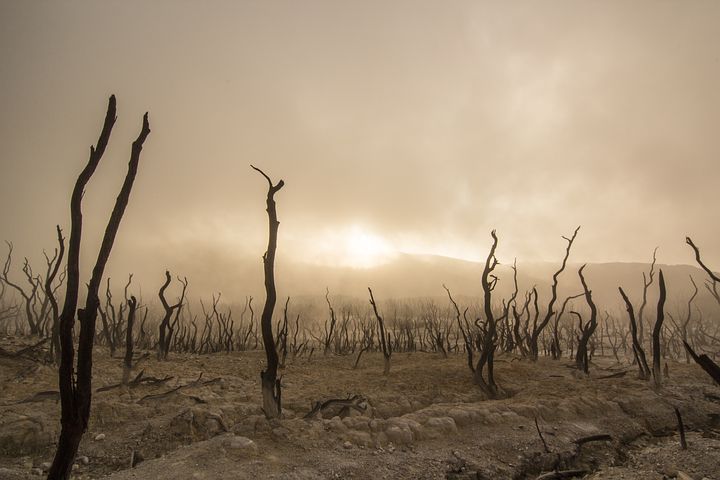Avoid Dioxin also in Costa Rica.
Each of us unconsciously takes toxins and harmful substances into the body every day. Avoid Dioxin also in Costa Rica. Unfortunately, dioxin is among these poisons – and it is the most toxic substance ever.
Even here in Costa Rica, you won’t be able to avoid getting in touch with dioxin, because what you should know: the poison is everywhere and there will probably be no place in the world where the toxin does not occur. But it is clear: At some patches of earth there are more of them, some less. And here in Guanacaste, we can assume that the pollutants aren’t all that common because of the few cars and industry. Large factories or incinerators that pollute the air are scarcely available here, and thus the soil and air are still relatively under-loaded.
Fresh food
We also attach great importance to organic food, which in principle can be consumed with good conscience. Here in our Hotel Costa Rica we have grown a lot of fruits and vegetables, which of course always land fresh on our plates.

The eggs are from the neighbor’s happy chickens, and the meat comes from the self-grown corn-fed cattle and chickens from the mountains. Although we do not know exactly how much pollutants are in the fish here, but based on our own measurements, we assume that the found values are in the lower range here.
Inspired by the German Article ‘Dioxin: the eternal poison’, we now want to report a bit more about the worldwide problem of the poison.
How does the poison get into the body?
Producing workers, children who have been breastfed by injured mothers, or simply consumers of contaminated food – the poison is damaging millions of people worldwide. This is because more dioxin is taken daily than recommended, of course unconscious! But where does this poison come from? In principle, the spread can’t be avoided because every combustion process – be it garbage or the burning fireplace at Christmas – constitutes toxic agent.
But also chemical production processes, the steel industry or herbicides and wood preservatives distribute it all over the world. And after getting into the air, the dirt is widely spread by the wind. And finally, all the pollutants settle down and stick to vegetables or grass in the form of soil particles, whereupon the pastures and forage crops are polluted.
The vicious cycle continues: The animals feed the contaminated pastures and pick up the dioxins and at the end of the food chain is ultimately the human who takes the already contaminated animals and their by-products such as milk, eggs or cheese. Especially fatal is the fact that breastfeeding mothers already pass the poisons on to their babies via breast milk.
What kind of damage do you have to expect?
It should be taken quite seriously, which effects can bring a high poisoning: skin diseases, weakening of the immune system, mental disorders, heart and respiratory diseases, liver damage, pancreatic cancer, diabetes or just miscarriage and stillbirths of pregnant women.
Agent Orange
Dioxin – and the question of how toxic it is for humans – has been getting attentive only since the spraying missions in Vietnam, as these had malformed babies and diseased soldiers. At that time, the knowledge of the immense danger of politics and industry was simply justified that one wanted to avoid that the poison is used as a means of the mass destruction.
During the Vietnam War, President Kennedy sprayed the dioxin-containing Agent Orange to defoliate the jungle and destroy the crops in Southeast Asia. Almost exactly 72 million liters were sprayed by the US Army. The knowledge about the considerable damage of the civilians and soldiers was disclaimed by the producing chemical companies. The consequences were mass miscarriages as well as sick people throughout the country. 150000 Vietnamese children were disabled. A tragedy that people there are still struggling with today.
How can you protect yourself?
Basically, there is no way to protect yourself directly, because about 5-10% of the dioxin uptake happens over the air. However, the other 90-95% are absorbed through the diet and these can be influenced very well: It is known, for example, that very fatty products contain a lot of dioxin, as this mainly accumulates in fat.

Considering the contribution of different foods to the average daily intake of dioxins, it can be seen that as much as 43% comes from dairy products. 7% is pork but chicken and beef are only 3 %.
Therefore, greasy meat or other fatty foods are simply to be avoided. Unfortunately, breastfeed babies also take in more dioxin than recommended because breastmilk is very fatty and therefore dioxin is bounded there.
How do you get dioxin out of your body?
The medical journal writes: Once the substance has entered the body, it is difficult to get it out again. Because the half-lives in fat of adults for the 2,3,7,8-TCDD is seven to ten years. The level of human stress depends mainly on age, diet and weight changes, breastfeeding for women and lactation in infants and toddler.
enjoy magic blue zone
Zurück zur Startseite Costa Rica Reisetipps.


